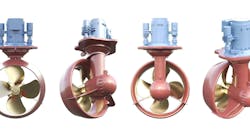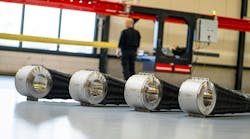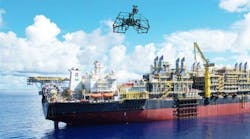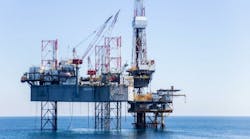Deciding that the flow rate of the cleaning fluid was the major factor in extracting debris and particulate matter in flushing tubing, VFL developing a tube cleaning process that develops a pressure-induced high flow rate. Louis Vickio, VFL's president and CEO, explains that the Reynolds number must be high enough to generate turbulent flow in the tubing system.
In order to achieve this in differing sizes of tubing and hoses, a variable speed drive was designed for the flushing pump. With this pump at the heart of the system, a skid mounted unit was designed to achieve multiple filtration system. Other uses include:
- Flushing multiple lines at one time with individual inlet line sample ports
- Operation up to 15,000 psi at 12 gpm
- Zero emissions (pump uses customer-provided 480 volt three phase, 75 kW power)
- Components are explosion proof to NERC class I Div. II specification.
The system has a large capacity holding tank with separate closed loop filtration system and manway access for physical cleaning and inspection. A self-contained trailer mount using four bolts provides for transportation to the site or offshore. Onsite analysis is provided by an operating technician using VFL's fluid sampling kit.
The typical sequence of operation is as follows; Lines of the same capacity are identified for grouping. Each group of tubes is precleaned with tri-sodium phosphate (TSP) at about 120°F, then flushed with de-ionized water, followed by filling and flushing with customer specified control fluid. A sample is taken of each flush and microscopically analyzed to ensure that the lines are clean before moving to the next stage. Pressure testing can be performed anytime before or after the cleaning.
The system is suitable for wellhead tree function testing, umbilical pressure testing, and normal SIT testing as part of customer's acceptance procedure. This unit is also excellent for methanol injection. The explosion proofing and variable speed drive allows methanol flow without by-pass valving and avoids hazardous heat buildup.
Since adopting NAS guidelines in the late 1980s, operators and manufacturers have demanded much stricter control of cleanliness. Cleaner systems generally mean less down time due to failures. The system was used recently in several offshore and onshore applications:
- After flushing a 21-line workover umbilical over a period of one week, without having to change the filters, a VFL flushing unit ran for one hour, producing a blocked filter. Subsequent flushing achieved NAS 1638 class 6 cleanliness level after 19 hours of operation.
- Top sides equipment for the new British Borneo, Allegheny tension-leg platform platform required flushing of all rig lines, HPU, and a chemical injection unit with a four week time slot allocated. The job was completed in 5 days to NAS 1638 class 6 level.
- On the same project (different site), two 6,000-ft reels of control umbilical with over 40 lines were flushed and pressure tested in five days.
- Garden Banks 72 project for PennzEnergy required the flushing and pressure testing of topsides lines, which was completed in four days, including flushing various 2-in. fill lines, to a class 8 level. The equipment had to work in an explosion proof environment.
- Cameron Industries (Liberty, Texas) pressure tested and flushed subsea tree components for a new offshore installation.




